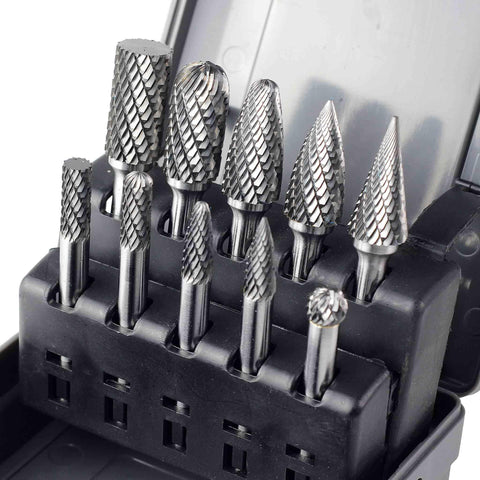- बिहार कलां, पीलीभीत रोड, इज्जतनगर, बरेली
- +91-8938008532
In the intricate dance of metalworking, burr bits emerge as unsung heroes, wielding precision with an artistry that transforms raw metal into finely detailed masterpieces. These tools, seemingly modest in their appearance, embody a complex interplay of design, functionality, and craftsmanship. To understand their impact, one must delve into the essence of burr bits, exploring their types, applications, and the profound effect they have on the metalworking industry.
At its core, a burr bit is a rotary cutting tool used to shape, smooth, and deburr metal surfaces. Their primary function is to remove excess material and refine the finish of metal components, a task crucial in both artistic and industrial applications. The efficiency of a burr bit lies in its ability to deliver high precision with minimal effort, making it an indispensable tool for machinists, jewelers, and hobbyists alike.
Burr bits come in a variety of shapes and sizes, each designed for specific tasks. The most common types include the cylindrical, ball-nose, and flame-shaped burrs. Each type caters to different metalworking needs - cylindrical burrs are ideal for flat surfaces and straight edges, ball-nose burrs excel in contouring and carving, and flame-shaped burrs offer precision in detailed work. The choice of burr bit directly influences the quality of the final product, highlighting the importance of selecting the right tool for the job.
One of the most significant advancements in burr bit technology is the variety of materials used in their construction. High-speed steel (HSS), carbide, and diamond burrs represent the pinnacle of durability and cutting performance. Carbide burrs, for instance, are known for their exceptional hardness and heat resistance, making them suitable for cutting through tough metals like stainless steel and titanium. Diamond burrs, on the other hand, are favored for their unmatched precision and ability to handle delicate operations on harder materials. The material of the burr bit not only affects its cutting efficiency but also its longevity, making it a crucial consideration for any metalworking project.
The effectiveness of burr bits extends beyond their physical design; the technique of using these tools is equally important. Proper usage involves understanding the optimal speed, pressure, and angle for each type of burr bit. Overly aggressive cutting can lead to tool damage or compromised work quality, while too little pressure may result in inefficient material removal. Mastery of these techniques allows metalworkers to achieve smoother finishes, cleaner cuts, and more intricate designs, underscoring the skill required to harness the full potential of burr bits.
In the realm of metalworking, burr bits are not just tools but essential components in the pursuit of excellence. They play a critical role in industries ranging from aerospace and automotive to jewelry making and sculpture. For instance, in the aerospace industry, precision is paramount; burr bits are used to deburr and refine aircraft components to ensure safety and performance. Similarly, in jewelry making, these tools help in crafting intricate designs and achieving fine details that elevate the aesthetic appeal of the pieces.
Moreover, the versatility of burr bits allows them to adapt to various applications beyond metalworking. Woodworkers, engravers, and even stone carvers utilize burr bits to achieve specific results in their respective fields. This cross-disciplinary usage highlights the adaptability of burr bits and their integral role in a wide array of crafting and manufacturing processes.
The evolution of burr bits reflects broader trends in technology and manufacturing. Innovations such as computer numerical control (CNC) machines have revolutionized how burr bits are used, enabling automated, precise, and consistent cutting that enhances productivity and accuracy. As technology advances, burr bits continue to evolve, incorporating new materials and designs to meet the ever-growing demands of modern metalworking.
Understanding the significance of burr bits goes beyond mere appreciation of their function; it involves recognizing their impact on the broader landscape of craftsmanship and industry. Each burr bit, with its unique design and material composition, contributes to the creation of high-quality products and the advancement of technological processes. The skillful application of these tools not only enhances the precision and quality of work but also embodies the intersection of art and engineering.
In summary, burr bits are far more than just cutting tools; they represent a crucial element in the craftsmanship of metalworking. Their diverse designs, advanced materials, and versatile applications underscore their importance in achieving precision and quality in various industries. As metalworking continues to evolve, the role of burr bits remains integral, bridging the gap between raw material and finished product with unparalleled precision and artistry.
